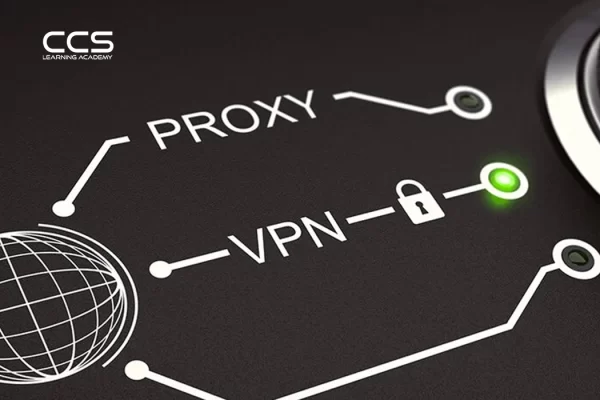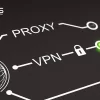Course Description
This online CompTIA Security+ (SY0-601) certification training course provides the basic knowledge needed to plan, implement, and maintain information security in a vendor-neutral format. This includes risk management, host and network security, authentication and access control systems, cryptography, and organizational security. This CompTIA Security+ course maps to the CompTIA Security+ certification exam (SY0-601). Objective coverage is marked throughout the course.
Our CompTIA Security+ courseware has received the CompTIA Approved Quality Content (CAQC) validation, assuring that all test objectives are covered in the training material.
What is CompTIA Security+ Certification?
The CompTIA Security+ certification is the minimum level of certification for all IT security positions beyond entry-level. This online CompTIA Security+ training course delivers the core knowledge required to pass the CompTIA Security+ certification exam and the skills necessary to advance to an intermediate-level security job.
Participants benefit most from this course if they intend to take the CompTIA Security+ SY0-601 exam.
This course supports a CompTIA certification that is a DoD Approved 8570 Baseline Certification and meets DoD 8140/8570 training requirements.
Course Topics
Lesson 1: Comparing Security Roles and Controls
- Topic 1A: Compare and Contrast Information Security Roles
- Topic 1B: Compare and Contrast Security Control and Framework Types
Lesson 2: Explaining Threat Actors and Threat Intelligence
- Topic 2A: Explain Threat Actor Types and Attack Vectors
Lesson 3: Performing Security Assessments
- Topic 3A: Assess Organizational Security with Network Reconnaissance Tools
- Topic 3B: Explain Security Concerns with General Vulnerability Types
- Topic 3C: Summarize Vulnerability Scanning Techniques
- Topic 3D: Explain Penetration Testing Concepts
Lesson 4: Identifying Social Engineering and Malware
- Topic 4A: Compare and Contrast Social Engineering Techniques
- Topic 4B: Analyze Indicators of Malware-Based Attacks
Lesson 5: Summarizing Basic Cryptographic Concepts
- Topic 5A: Compare and Contrast Cryptographic Ciphers
- Topic 5B: Summarize Cryptographic Modes of Operation
- Topic 5C: Summarize Cryptographic Use Cases and Weaknesses
- Topic 5D: Summarize Other Cryptographic Technologies
Lesson 6: Implementing Public Key Infrastructure
- Topic 6A: Implement Certificates and Certificate Authorities
- Topic 6B: Implement PKI Management
Lesson 7: Implementing Authentication Controls
- Topic 7A: Summarize Authentication Design Concepts
- Topic 7B: Implement Knowledge-Based Authentication
- Topic 7C: Implement Authentication Technologies
- Topic 7D: Summarize Biometrics Authentication Concepts
Lesson 8: Implementing Identity and Account Management Controls
- Topic 8A: Implement Identity and Account Types
- Exam objectives covered:
- Topic 8B: Implement Account Policies
- Topic 8C: Implement Authorization Solutions
- Topic 8D: Explain the Importance of Personnel Policies
Lesson 9: Implementing Secure Network Designs
- Topic 9A: Implement Secure Network Designs
- Topic 9B: Implement Secure Switching and Routing
- Topic 9C: Implement Secure Wireless Infrastructure
- Topic 9D: Implement Load Balancers
Lesson 10: Implementing Network Security Appliances
- Topic 10A: Implement Firewalls and Proxy Servers
- Topic 10B: Implement Network Security Monitoring
- Topic 10C: Summarize the Use of SIEM
Lesson 11: Implementing Secure Network Protocols
- Topic 11A: Implement Secure Network Operations Protocols
- Topic 11B: Implement Secure Application Protocols
- Topic 11C: Implement Secure Remote Access Protocols
Lesson 12: Implementing Host Security Solutions
- Topic 12A: Implement Secure Firmware
- Topic 12B: Implement Endpoint Security
- Topic 12C: Explain Embedded System Security Implications
Lesson 13: Implementing Secure Mobile Solutions
- Topic 13A: Implement Mobile Device Management
- Topic 13B: Implement Secure Mobile Device Connections
Lesson 14: Summarizing Secure Application Concepts
- Topic 14A: Analyze Indicators of Application Attacks
- Topic 14B: Analyze Indicators of Web Application Attacks
- Topic 14C: Summarize Secure Coding Practices
- Topic 14D: Implement Secure Script Environments
- Topic 14E: Summarize Deployment and Automation Concepts
Lesson 15: Implementing Secure Cloud Solutions
- Topic 15A: Summarize Secure Cloud and Virtualization Services
- Topic 15B: Apply Cloud Security Solutions
- Topic 15C: Summarize Infrastructure as Code Concepts
Lesson 16: Explaining Data Privacy and Protection Concepts
- Topic 16A: Explain Privacy and Data Sensitivity Concepts
- Topic 16B: Explain Privacy and Data Protection Controls
Lesson 17: Performing Incident Response
- Topic 17A: Summarize Incident Response Procedures
- Topic 17B: Utilize Appropriate Data Sources for Incident Response
- Topic 17C: Apply Mitigation Controls
Lesson 18: Explaining Digital Forensics
- Topic 18A: Explain Key Aspects of Digital Forensics Documentation
- Topic 18B: Explain Key Aspects of Digital Forensics Evidence Acquisition
Lesson 19: Summarizing Risk Management Concepts
- Topic 19A: Explain Risk Management Processes and Concepts
Lesson 20: Implementing Cybersecurity Resilience
- Topic 20A: Implement Redundancy Strategies
- Topic 20B: Implement Backup Strategies
- Topic 20C: Implement Cybersecurity Resiliency Strategies
Lesson 21: Explaining Physical Security
- Topic 21A: Explain the Importance of Physical Site Security Controls
- Topic 21B: Explain the Importance of Physical Host Security Controls
Course Objectives
In this online CompTIA Security+ (SY0-601) Certification training course, you learn to:
- Proactively implement sound security protocols to mitigate security risks
- Quickly respond to security issues
- Retroactively identify where security breaches may have occurred
- Design a network, on-site or in the cloud, with security in mind
Prerequisites
This CompTIA Security+ training course assumes basic knowledge of how to use and maintain individual workstations.
Attendees should be CompTIA A+ certified (or have equivalent experience) and CompTIA Network+ certified (or have equivalent experience) with 2-3 years of networking experience.
Inclusions
With CCS Learning Academy, you’ll receive:
- Instructor-led training course
- CompTIA Security+ Certification guide
- CompTIA Security+ pre and post-assessment
- Practice Test questions
- Comprehension exercises and study digest
- Labs for hands-on practice
- Onsite exam scheduling support*
*For more details WhatsApp or email us: +(506) 8584-4013 or latam@ccslearningacademy.com.
FAQ
1. Is the CompTIA Security+ course beginner-friendly? Yes, it’s a great course and certification for beginners and can help launch your cybersecurity career.
2. Do I need to take CompTIA A+ before CompTIA Security+? It’s strongly encouraged. Consult the CompTIA Career Roadmap to learn the correct course progression.
3. Is CompTIA Security+ certification enough to get a job? Yes. It demonstrates fundamental knowledge and commitment to the cybersecurity field.
4. Does the CompTIA Security+ certification expire? The certification is valid for 3 years from the exam date. You can take continuing education classes to keep it updated in three-year increments.






